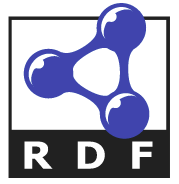I was catching up with my old friend Paul Prescod the other day. We have not only known each other since the early days of XML, but actually before that: “since XML was a four-letter word”, to quote Paul.
The following blog entries give a brief introduction to the RDF data model, the most important of the other W3C standards that build on it, and what people do with those standards:
When I first heard about the AWS Graph Explorer I assumed that it was a cloud-based tool for use with Neptune, the AWS cloud-based triplestore. After I read Fan Li’s First Impressions of the AWS Graph Explorer I realized that you can install this open source tool locally and point it at any SPARQL endpoint you want, so I cranked up Jena Fuseki on my laptop, loaded some data into it, and installed the Graph Explorer.
I recently wondered “could I run a Python script that includes the rdflib library on my Samsung Android phone?” Five minutes later, I was doing it, and about three of those minutes were spent installing Python.
OriginTrail is doing one of the most interesting combinations of blockchain technology and RDF that I have seen. In November I spoke with CTO and co-founder Branimir Rakić.
Justin Dowdy recently created an open source project to convert the metadata in a git repository to RDF, and I’ve been having some fun with it. Before getting into the details, as a brief demo I’ll start with a sample SPARQL query that I did to list all of the 2019 commits in my misc github repo:

![[ODU mascot]](https://www.bobdc.com/img/main/bigblue.jpg)

